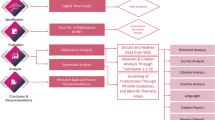Abstract
With availability of crime data to the public via sources such as the Uniform Crime Reports, and increasing geographic information system (GIS) capabilities for mapping crime, macro-level studies of crime have advanced knowledge of how crime is distributed over large areas. Choropleth mapping, commonly used in macro-level studies, visually displays data by assigning the number of crimes or crime rate to the corresponding spatial unit and using different shades or textures for each value or classified values creating a thematic map. However, crime incidents or crime rates are not dispersed evenly within spatial units, and choropleth mapping masks the underlying nuances of the distribution. Artificial boundaries, along with variations in the size of the unit of analysis, can further distort the true distribution of crime. Dasymetric mapping provides a methodology for refining the distribution of crime within a spatial unit. It does so by using additional data, such as land use and census data, to provide a realistic estimate of how crime may be distributed within the units of analysis. Dasymetric mapping is also useful in creating density maps to reveal clusters of crime normally masked with choropleth maps. This paper will show how dasymetric mapping can estimate the spatial distribution of aggregate level residential burglary within political boundaries in Massachusetts based on land use and housing data.
Similar content being viewed by others
REFERENCES
Bowers, K., and Hirschfield, A. (1999). Exploring links between crime and disadvantage in North-West England: An analysis using geographical information systems. Int. J. of Geogr. Informa. Sci. 13: 159–184.
Brantingham, P. L., and Brantingham, P. J. (1982). Mobility, notoriety, and crime: A study of crime patterns in urban nodal points. J. of Environ. Syst. 11: 89–99.
Canter, P. R. (1997). Geographic information systems and crime analysis in Baltimore County, Maryland. In Weisburd, D., and McEwen, T. (eds.), Crime Mapping and Crime Prevention, Vol. 8, pp. 157–190. Willow Tree Press, Inc., Monsey, NY.
Chrisman, N. (1997). Exploring Geographical Information Systems. John Wiley and Sons, New York.
Craglia, M., Haining, R., and Wiles, P. (2000). A comparative evaluation of approaches to urban crime pattern analysis. Urban Studies 37: 711–729.
DeMers, M. (2000). Fundamentals of Geographical Information Systems. John Wiley and Sons, New York.
Fisher, P. F., and Langford, M. (1996). Modeling sensitivity to accuracy in classified imagery: A study of areal interpolation by dasymetric mapping. Profes. Geogr. 48: 299–309.
Flowerdew, R., and Green, M. (1989). Statistical methods for inference between incompatible zonal systems. In Goodchild, M. F., and Gopal, S. (eds.), Accuracy of Spatial Databases, pp. 239–247. Taylor and Francis, London.
Flowerdew, R., and Green M. (1991). Data integration: Statistical methods for transferring data between zonal systems. In Masser, I., and Blakemore, M. (eds.), Handling Geographical Information, pp. 38–54. Longman, New York.
Harries, K. D. (1980). Crime and the Environment. Charles C. Thomas, Springfield, Illinois.
Holloway, S. R., Schumacher, J., and Redmond R. L. (1999). People and place: Dasymetric mapping using Arc/Info. In Morain, S. (ed.), GIS Solutions in Natural Resource Management, pp. 283–291. OnWord Press, Santa Fe, New Mexico.
Joerg, W. L. G. (1935). Research problems in natural science bearing on national land planning. Second Report of the Science Advisory Board, pp. 375–394. September 1, 1934 to August 31, 1935, Washington.
Lam, N. S. (1983). Spatial interpolation methods: A review. Am. Cartogr. 10: 129–149.
Langford, M., and Unwin, D. J. (1994). Generating and mapping population density surfaces within a geographical information system. Cartogr. J. 31: 21–26.
Rengert, G. F., and Wasilchick, J. (2000). Suburban Burglary. Charles C. Thomas, Springfield Illinois.
Reno, S. (1998). Using crime mapping to address residential burglary. In La Vigne, N., and Wartell, J., (eds.), Crime Mapping Case Studies: Successes in the Field, Vol. 1, pp. 15–21. Police Executive Research Forum, Washington, DC.
Sacco, V. F., and Kennedy, L. W. (2002). The Criminal Event: Perspectives in Space and Time. Wadsworth, Belmont, California.
Warden, J., and Shaw, J. (1998). Predicting a residential break-in pattern. In La Vigne, N., and Wartell, J., (eds.), Crime Mapping Case Studies: Successes in the Field, Vol. 2, pp. 81–87. Police Executive Research Forum, Washington, DC.
Wernicke, S. (1998). Close the door on crime: A mapping project. In La Vigne, N., and Wartell, J., (eds.), Crime Mapping Case Studies: Successes in the Field, Vol. 1, pp. 27–34. Police Executive Research Forum, Washington, DC.
Wright, J. K. (1936). A method of mapping densities of population with cape cod as an example. Geogr. Rev. 26: 103–110.
Wright, R. T., and Decker, S. H. (1994). Burglars on the Job: Streetlife and Residential Breakins. Northeastern University Press, Boston.
Yuan, Y., Smith, R. M., and Limp, W. F. (1997). Remodeling census population with spatial information from Landsat TM imagery. Computers, Environ. Urban Syst. 21: 245–258.
Author information
Authors and Affiliations
Rights and permissions
About this article
Cite this article
Poulsen, E., Kennedy, L.W. Using Dasymetric Mapping for Spatially Aggregated Crime Data. Journal of Quantitative Criminology 20, 243–262 (2004). https://doi.org/10.1023/B:JOQC.0000037733.74321.14
Issue Date:
DOI: https://doi.org/10.1023/B:JOQC.0000037733.74321.14




